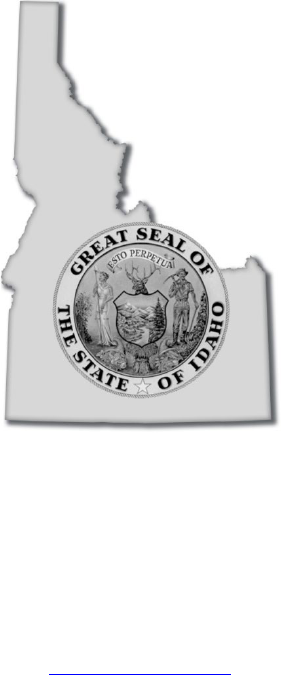
State of Idaho
Office of Attorney General
Raúl R. Labrador
INTRODUCTION
This manual is intended to help tenants and landlords better
understand their rights and responsibilities under Idaho law. It
is not a restatement of Idaho law or a substitution for
professional legal advice.
The Attorney General’s Office does not enforce Idaho’s
landlord-tenant laws. Rather, tenants and landlords enforce
these laws through private actions. The parties should consult
with a private attorney when they have questions about their
legal rights or options.
This manual includes two checklists in the appendices. The
first helps tenants select and rent a property, and the second is
a move-in and move-out checklist.
Sincerely,
Raúl R. Labrador
Attorney General
Table of Contents
PURPOSE AND SCOPE OF MANUAL ..............................................1
BEFORE RENTING ..............................................................................1
EVALUATE THE NEIGHBORHOOD ........................................................... 1
CALCULATE THE AMOUNT OF RENT, DEPOSITS AND FEES .................... 2
UNDERSTAND SMOKING, PET AND OTHER POLICIES ............................. 2
KNOW THE LANDLORD’S REPUTATION ................................................. 3
CREDIT AND BACKGROUND CHECKS OF TENANTS ................................ 3
RECOGNIZE HOUSING DISCRIMINATION ................................................ 4
RENTER’S INSURANCE ........................................................................... 5
“SECTION 8” RENTAL ASSISTANCE/HOUSING CHOICE VOUCHER
PROGRAM .............................................................................................. 5
LEASE AGREEMENTS .......................................................................6
THE DANGERS OF AN ORAL LEASE........................................................ 6
TERMS A WRITTEN LEASE SHOULD INCLUDE ....................................... 6
LEASE ADDENDUMS .............................................................................. 7
IMPROPER LEASE PROVISIONS ............................................................... 7
RESTRICTIVE LEASE PROVISIONS .......................................................... 8
COSIGNING A LEASE ............................................................................. 9
MOVING IN ...........................................................................................9
TURNING ON THE UTILITIES AND OTHER SERVICES .............................. 9
THE MOVE-IN INSPECTION AND VIDEO ............................................... 10
THE TENANT’S RIGHT TO PRIVACY .......................................... 10
MAINTAINING THE RENTAL PROPERTY ................................. 11
THE LANDLORD’S DUTY TO KEEP THE PROPERTY SAFE AND
HEALTHY ............................................................................................ 11
WHAT TO DO IF A LANDLORD WON’T MAINTAIN A RENTAL............. 12
Notify the Landlord ....................................................................... 12
Wait Three Days for Repair .......................................................... 13
Sue the Landlord ........................................................................... 13
Attend the Trial ............................................................................. 13
Enforce the Court’s Order ............................................................ 13
Recover for Personal Injuries ....................................................... 13
THE TENANT’S RESPONSIBILITIES FOR SAFEGUARDING THE
PROPERTY ........................................................................................... 13
WHAT TO DO IF A TENANT DAMAGES THE RENTAL ........................... 14
Notify the Tenant .......................................................................... 14
Allow Three Days for Repair ........................................................ 15
Evict the Tenant ............................................................................ 15
SPECIAL PROPERTY ISSUES ......................................................... 15
THE LANDLORD’S DUTY TO PROVIDE UTILITY SERVICES ................... 15
TOXIC MOLD CONCERNS ..................................................................... 16
PAYING AND COLLECTING RENT .............................................. 17
DUE DATES AND LATE FEES ................................................................ 17
WITHHOLDING RENT ........................................................................... 18
THE LANDLORD’S REMEDIES WHEN A TENANT FAILS TO PAY
RENT ................................................................................................... 18
Notice to Pay ................................................................................ 18
Service of the Complaint ............................................................... 18
Requesting a Continuance ............................................................ 18
Recovery of Attorney Fees and Costs ........................................... 19
Recovery of Unpaid Rent and Damages ....................................... 19
CHANGING THE LEASE .................................................................. 19
NOTICE ................................................................................................ 19
RENT AND FEE INCREASES AND LEASE RENEWALS ............................. 19
SUBLETTING ........................................................................................ 20
EXTENDING THE LEASE ....................................................................... 20
BREAKING THE LEASE ......................................................................... 20
HOLDOVER TENANCIES ....................................................................... 20
PROPERTY MANAGEMENT COMPANIES ................................. 20
MOVING OUT ..................................................................................... 21
NOTICE TO VACATE ............................................................................ 21
MOVE-OUT INSPECTION ...................................................................... 22
RETURN OF THE SECURITY DEPOSIT .................................................... 22
21-Day Return Rule ...................................................................... 22
Wear and Tear vs. Damage and Excessive Filth .......................... 23
Improper Notice May Affect Deposit Return ................................ 23
Tenant’s Remedies for Obtaining Security Deposit ...................... 24
Misrepresenting Necessary Repairs ............................................. 24
EVICTIONS ......................................................................................... 25
RETALIATORY EVICTIONS ................................................................... 25
THE EVICTION PROCESS ...................................................................... 25
Notice of Eviction ......................................................................... 25
Unlawful Detainer Action ............................................................. 27
UNLAWFUL EVICTIONS........................................................................ 27
REMOVAL OF TENANT’S PERSONAL PROPERTY ................................... 28
MANUFACTURED HOME RESIDENCY ACT .............................. 28
WRITTEN LEASES ................................................................................ 28
Required Lease Terms .................................................................. 29
Implied Lease Terms ..................................................................... 29
Prohibited Lease Terms ................................................................ 30
PARK RULES ........................................................................................ 30
RENT INCREASES ................................................................................. 30
SECURITY DEPOSITS ............................................................................ 30
LIABILITY OF THE LIEN HOLDER OR LEGAL OWNER OF A
MANUFACTURED HOME FOR BACK RENT AND UTILITIES ................... 31
REMOVAL OF A MANUFACTURED HOME ............................................. 31
SALE OF MANUFACTURED HOME ........................................................ 31
RENEWAL OF THE LEASE .................................................................... 32
TERMINATION OF THE LEASE .............................................................. 32
TENANT’S RIGHTS AND REMEDIES ...................................................... 33
STORAGE UNITS ............................................................................... 33
LIABILITY INSURANCE ......................................................................... 33
APPENDIX A - IDAHO CODE SECTIONS ..................................... 34
AT-WILL TENANCY ............................................................................. 34
FEES .................................................................................................... 34
FIXTURES – REMOVAL OF .................................................................... 34
LEASES ................................................................................................ 34
MANUFACTURED HOME PARKS ........................................................... 34
PROPERTY REPAIR ISSUES ................................................................... 35
SECURITY DEPOSITS ............................................................................ 35
SELF-SERVICE STORAGE FACILITIES ................................................... 35
SMALL CLAIMS ACTIONS .................................................................... 35
TRANSFER OF PROPERTY ..................................................................... 36
UNLAWFUL DETAINER ........................................................................ 36
WASTE ................................................................................................ 36
APPENDIX B ....................................................................................... 37
PRE-RENTAL CHECKLIST..................................................................... 37
APPENDIX C ....................................................................................... 43
RENTAL MOVE-IN & MOVE-OUT CHECKLIST ..................................... 43
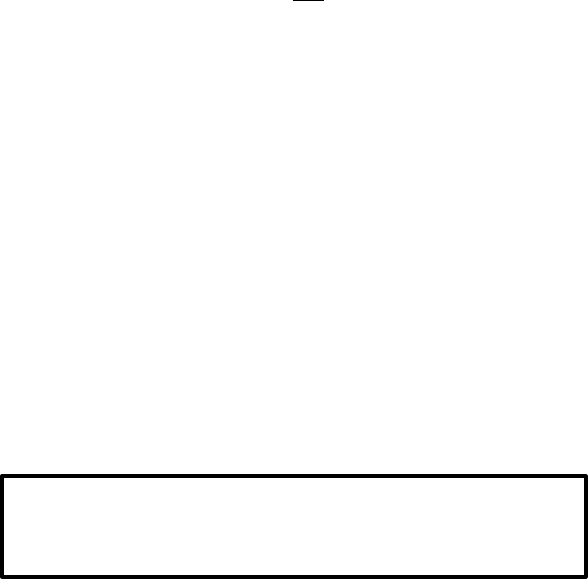
1
PURPOSE AND SCOPE OF MANUAL
The Attorney General’s Office publishes this manual as a
courtesy to Idaho’s tenants and landlords. It outlines general
guidelines about the parties’ rights and responsibilities under
Idaho law. This manual is not a restatement of Idaho’s
landlord-tenant laws nor a substitute for professional legal
advice. Appendix A lists Idaho laws related to landlord-tenant
matters.
The Attorney General’s Office does not enforce Idaho’s
landlord-tenant laws and cannot advise tenants or
landlords about their rights. Parties with questions about
their legal rights should schedule a consultation with a private
attorney.
BEFORE RENTING
Choosing where to live is an important decision. For a
landlord, deciding whether an individual will make a suitable
tenant can be challenging. Considering the following factors
may help the parties make more informed decisions before
they commit to a lease.
EVALUATE THE NEIGHBORHOOD
Investigate the neighborhood where the property is located.
Make sure it is a safe and healthy place to live, especially if
children will be living in the rental unit.
THE PRE-RENTAL CHECKLIST
IN APPENDIX B WILL HELP
DURING YOUR RENTAL SEARCH.

2
CALCULATE THE AMOUNT OF RENT, DEPOSITS
AND FEES
Idaho does not restrict the amount of rent or deposits that
landlords can charge. It is best to walk-away in situations
where the landlord refuses to disclose upfront and in writing
all of the costs involved in renting a property including rent,
deposits, and one-time or recurring fees.
UNDERSTAND SMOKING, PET AND OTHER
POLICIES
Although a landlord may not discriminate against protected
classes of individuals, a landlord may select prospective
tenants based on any lawful business criteria. Landlords can
set their own smoking, pet and other policies as long as they
are not discriminatory under local, state or federal law.
A landlord also may reject an applicant based on the person’s
inability to pay rent or the person’s criminal history. A valid
occupancy policy limiting the number of people per rental unit
– one that is based on health and safety standards – is a lawful
basis for refusing an applicant.
A NOTE ABOUT SUPPORT ANIMALS
Support animals, service animals and companion animals
are not legally considered “pets,” and tenants are entitled
to a support animal regardless of the landlord’s policy on
pets. Call the Intermountain Fair Housing Council at
208-383-0695 for more information about specific issues
related to support, service and companion animals.
3
KNOW THE LANDLORD’S REPUTATION
Tenants should talk to current and former tenants about the
landlord’s reputation and business practices. Former tenants
also post reviews on social media, the Better Business
Bureau’s website or on business-review websites.
CREDIT AND BACKGROUND CHECKS OF
TENANTS
Idaho law does not require landlords to check a prospective
tenant’s credit before approving the tenant’s rental
application. However, most landlords do check an applicant’s
income, employment and credit to verify the applicant can
afford to pay the rent each month.
Before running a credit check, the landlord should obtain the
prospective tenant’s written consent. If the landlord rejects an
applicant because of negative credit information, the landlord
must provide the applicant with the following information:
1. The reason the applicant was rejected;
2. The name and address of the credit reporting agency
that reported the negative information; and
3. The applicant’s right to obtain a free copy of the report
by requesting it from the credit reporting agency
within 60 days.
When reviewing an applicant’s background, landlords should
keep in mind that not everyone has an established credit
history. Young adults looking for their first apartment or
refugees from other countries may not have a credit report or
even a Social Security number.

4
RECOGNIZE HOUSING DISCRIMINATION
Discrimination based on sex, race, color, religion, disability,
familial status (presence of children under the age of 18) or
national origin is illegal. A disability includes a physical or
mental impairment, such as blindness, chronic alcoholism,
AIDS or its related complexes.
Landlords may not take any of the following actions based on
the above protected categories:
• falsely denying that a rental unit is available to some
applicants;
• running an advertisement that suggests a preference based
on a group characteristic;
• setting restrictive standards for certain tenants;
• refusing to accommodate the needs of disabled tenants,
such as allowing service animals;
• adopting inconsistent policies for different tenants; and
• terminating a lease for a discriminatory reason.
HOUSING DISCRIMINATION COMPLAINTS
If you believe you have suffered discrimination while
trying to rent a home or apartment, you can contact the
Idaho Human Rights Commission.
IMPORTANT
Landlords may not reject an applicant based on any
criteria that serves only as an excuse for discriminating
against a protected class.
5
RENTER’S INSURANCE
Tenants should consider buying renter’s insurance. Renter’s
insurance is an insurance policy that covers a tenant’s personal
belongings in case of loss by fire or other accident. Renter’s
insurance may cover claims or lawsuits brought against the
tenant. Most policies only cover personal property and do not
include motor vehicles or animals. Also, some policies
exclude floods or earthquakes. If you decide renter’s
insurance is right for you, shop around for a policy which fits
your needs.
“SECTION 8” RENTAL ASSISTANCE/HOUSING
CHOICE VOUCHER PROGRAM
The Idaho Housing and Finance Association (IHFA) and
several regional housing authorities administer a federal rental
assistance program that helps low-income families and elderly
or disabled individuals obtain decent, affordable rental
housing. The program is often called “Section 8” rental
assistance or the “Housing Choice Voucher Program.”
To be eligible for rental assistance, you must qualify under
income limits and other eligibility criteria and re-certify
eligibility annually. Program participants generally contribute
30-40% of their adjusted monthly gross income toward rent
and utilities. IHFA or the regional housing authority pays the
remaining balance directly to the landlord. Due to the high
demand for “Section 8” rentals, applicants are usually placed
on waiting lists for 2 months to 2 ½ years, depending on their
current housing status and the area of the state.
For more information regarding “Section 8” rental assistance,
including questions regarding eligibility requirements and
waiting periods, please contact the IHFA branch office or the
housing authority that serves the region in which you live.
6
LEASE AGREEMENTS
The lease agreement is a legal document that both parties
should negotiate, read, understand and sign. All questions
should be answered and all differences should be resolved
before either party signs the agreement. Absent a violation of
public policy, the lease is the sole contract that will govern the
landlord-tenant relationship for the duration of the tenancy.
When a dispute between the parties arises, look first to the
lease for a resolution.
THE DANGERS OF AN ORAL LEASE
Idaho recognizes oral leases for tenancies lasting less than one
year as long as the parties agree to all terms. The terms of an
oral agreement, however, are difficult to prove. A written,
signed lease avoids the problems of a “he said/she said”
situation.
TERMS A WRITTEN LEASE SHOULD INCLUDE
A written lease should be readable and should include the
following terms:
1. Contact Information. The names, addresses and
telephone numbers of the landlord or property
management company, the property owner (if
managed by a property management company), the
tenant and the tenant’s emergency contact,
maintenance and after-hours maintenance and any
other important persons.
2. Property Information. The address of the rental
property and the purpose for which it will be used.
3. Dates. The beginning and ending dates of the
agreement.
7
4. Rent. The amount of the rent, when it is due and the
amount charged for late fees.
5. Deposit. The amount of the security deposit, the name
of the financial institution where the landlord will hold
the deposit and an explanation of how the landlord will
use the deposit at the end of the tenancy.
6. Utilities & Repairs. The party who is responsible for
each of the utilities and for indoor and outdoor
maintenance and repair of the property, including
garages, carports and storage facilities.
7. Policies. All restrictions and policies placed on a
tenant’s use of the property, including the number of
occupants, whether pets or smoking is allowed,
mandatory quiet times and whether assignment or
subletting is permitted.
8. Termination. The process the tenant must follow to
give proper notice of intent to vacate or terminate the
lease.
9. Move-Out Inspection. Terms that allow the tenant
to attend the landlord’s move-out inspection.
10. Entrance. When and how the landlord can enter the
property.
11. Signatures. The signatures and dates of all parties.
LEASE ADDENDUMS
Sometimes landlords attach addendums to the lease agreement
to address specific policies (e.g., pets, parking, mold
disclosure, etc). An addendum should be signed at the same
time as the lease.
IMPROPER LEASE PROVISIONS
Lease agreements should not include any unlawful or
8
unenforceable terms, including incorrect or misleading
statements of the law. Examples of such provisions include
those that:
• misrepresent or conflict with the tenant’s rights under
Idaho’s landlord and tenant laws;
• misrepresent or conflict with the tenant’s right to appear
in court and defend against a landlord’s allegations;
• limit the landlord’s liability in situations that conflict with
the duties and responsibilities that Idaho law imposes
upon the landlord;
• allow the landlord to enter the rental unit without
providing proper notice as provided by law or the lease
agreement;
• require the tenant’s security deposit to cover damages not
caused by the tenant or the tenant’s guests;
• require the tenant to pay the landlord’s attorney fees if a
dispute goes to court, unless the judge rules in the
landlord’s favor; and
• allow the landlord to seize a tenant’s personal property if
the tenant fails to pay rent.
RESTRICTIVE LEASE PROVISIONS
A lease may include a provision that, while not unlawful,
severely limits the tenant’s ability to recover a deposit or
challenge the landlord’s actions in court. Examples of
restrictive lease provisions are those that:
• prevent the tenant from attending the landlord’s move out
inspection;
9
• require the tenant to pay for replacing or cleaning of items
that are subject to normal wear and tear (faded carpet or
toilet rings); or
• require the tenant to pay large non-refundable, upfront
fees.
COSIGNING A LEASE
A cosigner on a lease functions a lot like a cosigner on a loan.
Landlords may require a cosigner on a lease when the
potential tenant is young, lacks a credit history or does not
meet minimum income requirements.
The cosigner’s credit is impacted if the tenant stops paying
rent, gets evicted or the landlord sends unpaid lease payments
to a collection agency.
MOVING IN
Before moving into the rental, the tenant should find out
where to park, tour the community facilities, turn on the
utilities and complete the move-in inspection.
TURNING ON THE UTILITIES AND OTHER
SERVICES
The tenant may be responsible for contacting utility
companies to turn on the property’s power, water, gas,
cable/satellite TV or other services. The lease agreement
should list which utilities are billed to the landlord and which
the tenant must pay.
Some rental complexes have one gas or electric meter that
serves a group of rental units. Other complexes may have one
meter that measures the tenant’s gas or electricity use and
other meters for common areas, such as the laundry rooms.
The same may be true of water meters.

10
The landlord should inform the tenant about the shared meters
before the tenant agrees to lease the property. If the tenant is
responsible for paying the utilities, the parties should agree as
to how the charges will be divided among the individual rental
units.
THE MOVE-IN INSPECTION AND VIDEO
In addition to a lease, the landlord should provide a detailed
checklist to the tenant that includes every room in the home or
apartment and the items located in each of those rooms. The
tenant and landlord should conduct an inspection together,
noting everything that is broken, worn, missing or dirty. If a
defect is serious, the landlord should repair it before the tenant
moves in.
The best way to record the condition of a rental is to videotape
the inspection. Photographing damages also is helpful to
establish pre-existing conditions.
Each party should keep a copy of the inspection checklist and
the video/photographs. Many court disputes concern the
condition of a rental property after a tenant moves out. A case
without documents and photos is difficult to win.
THE TENANT’S RIGHT TO PRIVACY
Tenants have a right to privacy in their rentals. The lease
should specify the landlord’s right to enter the tenant’s
property to:
THE RENTAL MOVE-IN/OUT CHECKLIST IN
APPENDIX C HELPS TENANTS
DOCUMENT THE RENTAL’S CONDITION
AT MOVE-IN/OUT.
11
• Inspect for damage and make necessary repairs;
• Respond to an emergency involving life or property; and
• Show the property to prospective purchasers or tenants at
convenient times.
In addition, the lease should explain the landlord’s rights when
a tenant doesn’t pay the rent or abandons the property.
If the lease doesn’t include these provisions and the landlord
needs to enter the property, the landlord first should notify the
tenant why the entry is necessary. The landlord and tenant
then can agree on a reasonable manner and time of entry.
MAINTAINING THE RENTAL PROPERTY
Landlords and tenants have different responsibilities for
maintaining the rental property. The lease agreement should
include these duties. Idaho law outlines additional
responsibilities.
THE LANDLORD’S DUTY TO KEEP THE
PROPERTY SAFE AND HEALTHY
Landlords must maintain the rental to protect a tenant’s safety
and health. This means landlords must comply with city and
county ordinances and state laws regarding housing
conditions.
The following are examples of housing conditions that may
violate local or state housing standards:
• Structural deterioration, including cracked and crumbling
walls and ceilings and broken or missing doors and
windows;

12
• Defective plumbing, including a broken toilet, lack of
hot/cold water, absent sinks or bathing facilities and
serious leaks;
• Exposed wiring;
• Nonfunctioning heating units;
• No means to remove or store garbage;
• Insect infestations;
• Leaking roof or walls from insufficient waterproofing or
weather protection; and
• Dismantling or not installing smoke detectors.
WHAT TO DO IF A LANDLORD WON’T MAINTAIN
A RENTAL
The Attorney General’s Office cannot assist tenants (or
landlords) with property repair or maintenance issues. The
process for forcing a landlord to repair the property is
relatively simple. Tenants who need legal assistance should
talk to a private attorney.
Notify the Landlord
To require the landlord to maintain the property, the tenant
first must provide the landlord with a written list of the
violations. The tenant can deliver the notice in any of the
following ways:
a. In person;
b. By certified mail; or
c. By leaving it with an employee at the landlord’s usual
place of business.
13
Wait Three Days for Repair
The landlord has three days after service of the notice to fix
the violation. Failure to repair allows the tenant to sue the
landlord to force compliance.
Sue the Landlord
The landlord must receive a copy of the summons and
complaint at least five days before the trial.
Attend the Trial
The trial is held within 12 days of the complaint being filed,
unless the tenant requests a later date.
Enforce the Court’s Order
If the tenant wins, the judge will order the landlord to comply
with the tenant’s notice of violation. The judge also may order
the landlord to pay the tenant’s court costs and attorney fees.
Recover for Personal Injuries
A tenant who has suffered injuries from a landlord’s failure to
maintain the property may sue for damages. If the tenant
wins, the judge may require the landlord to pay three times the
tenant’s damages, along with the tenant’s attorney fees and
court costs.
THE TENANT’S RESPONSIBILITIES FOR
SAFEGUARDING THE PROPERTY
The tenant must safeguard the rental property and ensure that
damage does not occur. Typical tenant responsibilities
include:
• Keep the property clean and sanitary;
14
• Properly dispose of garbage;
• Use appliances, electrical fixtures and plumbing facilities
properly;
• Prevent family and friends from damaging the property;
• Obey the landlord’s property regulations and use the
property for only lawful purposes; and
• Prevent injury to others due to actions performed on the
tenant’s property.
WHAT TO DO IF A TENANT DAMAGES THE
RENTAL
If the tenant’s carelessness or negligence causes damage to the
property, the tenant may be required to pay the landlord for
the damage and may be evicted. If a landlord believes a tenant
has or is damaging the property, the landlord should take the
following steps to notify and, if necessary, evict the tenant.
Notify the Tenant
The landlord must give the tenant written notice of the
violation. The notice can be:
a. Delivered in person; or
b. Left with a competent person at the tenant’s residence
or place of business and mailed to the tenant’s
residence.
If neither of these options is available, the landlord must:
a. Post a copy of the notice in a conspicuous place on the
property;
b. Leave a copy of the notice with any person living at
the property; and
15
c. Mail a copy of the notice to the tenant at the property
address.
Allow Three Days for Repair
The tenant has three days to fix the problem. Failure to remedy
the problem gives the landlord the right to evict the tenant and
recover costs to pay for the tenant’s damages to the property.
However, if a landlord has reasonable grounds to believe any
person is or has been engaged in the unlawful delivery,
production or use of a controlled substance on the leased
premises, the landlord can institute eviction proceedings
immediately.
Evict the Tenant
For a discussion of eviction proceedings, see the section titled
“Evictions.”
SPECIAL PROPERTY ISSUES
The Consumer Protection Division regularly receives
inquiries from consumers about how they can resolve disputes
with their landlord about utility services or the presence of
mold in the rental unit.
THE LANDLORD’S DUTY TO PROVIDE UTILITY
SERVICES
A landlord or utility company may shut off a utility for a
reasonable amount of time if repairs need to be made.
If a tenant discovers that a utility company has discontinued
services because of the landlord’s actions or inactions, the
tenant should contact the landlord and discuss a prompt
resolution. It is important to keep a written record of all
conversations in case legal action becomes necessary.
16
Assuming the landlord refuses to facilitate an immediate
reconnection of services, the tenant next should serve written
notice on the landlord that utility services need to be restored
immediately. In the meantime, the tenant may contact the
utility company or municipality and inquire about placing
services in the tenant’s own name. A utility company is not
required to take action on a tenant’s behalf.
The Idaho Public Utilities Commission prohibits public
utilities from shutting off a customer’s gas or electric heat
during December, January and February if a customer can’t
pay the electric or gas bill and the customer has children,
elderly, or ill people in the home. Only public utilities are
subject to this prohibition.
TOXIC MOLD CONCERNS
Idaho does not have a government agency that regulates the
inspection or removal of toxic mold within rental property.
The Idaho Department of Health and Welfare’s Indoor
Environment Program educates Idahoans about human health
risks associated with exposure to indoor contaminants, such
as toxic mold.
While most homes have a small amount of mold inside them,
to eliminate the possibility of a dangerous infestation, the
Department of Health and Welfare recommends that tenants
take the following steps.
• Notify their landlords immediately if they notice plumbing
leaks, excess moisture or mold growth that reappears
despite regular cleaning.
• Use exhaust fans regularly in the kitchen, bathroom, and
laundry room.
• Clean and dust regularly.
17
• Clean and dry the walls and floors around the sink,
bathtub, shower, toilets, windows and patio doors using a
common household disinfecting cleaner.
• Ensure the clothes dryer is vented to the outside and clean
the lint screen after every use.
• Do not overfill closets or storage areas.
• Keep beds, dressers and other objects pulled a few inches
away from walls to allow moisture to escape.
• Do not obstruct heating and ventilation ducts in unused
areas.
• Immediately dry any spills or pet urine on carpeting.
• Immediately report any heating, ventilation, air
conditioning or laundry malfunctions.
• Keep doors and windows closed during damp weather.
PAYING AND COLLECTING RENT
Landlords may restrict the form in which they accept rental
payments, such as by certified check or online payment portal.
This is not an unlawful practice.
DUE DATES AND LATE FEES
The lease governs the date on which the rent is due and the
consequences of not paying on time or in full. Fees charged
to residential tenants must be reasonable, including late rent
fees. Fees, fines, assessments, interest, or other costs cannot
be greater than the amount agreed upon in the lease.
Writing post-dated checks is never a good idea because the
recipient is under no obligation to hold the check. If the check
bounces, the tenant will incur bank fees and possibly suffer
negative credit consequences.
18
WITHHOLDING RENT
Generally, Idaho law does not allow tenants to withhold rent
based on unsafe living conditions and does not allow tenants
to complete necessary repairs and then seek reimbursement
from their landlords. The only exception is with respect to the
installation of smoke detectors. Idaho Code § 6-320(a)(6)
authorizes a tenant, after providing three-day notice to the
landlord, to install the necessary smoke detectors and deduct
the cost from the tenant’s next month’s rent.
THE LANDLORD’S REMEDIES WHEN A TENANT
FAILS TO PAY RENT
If a landlord pursues formal legal proceedings solely to evict
a tenant due to nonpayment of rent, the legal proceedings must
proceed quickly and in compliance with proper procedures.
Notice to Pay
A notice allowing the tenant three days to pay the rent due
must be served on the tenant. Once the notice is served, the
complaint for eviction can be filed.
Service of the Complaint
The trial must be held within 12 days after the lawsuit is filed
unless the landlord requests a later date. The tenant must be
given written notice of the complaint by being served with a
copy of the summons and the complaint at least five days
before the trial.
Requesting a Continuance
At the tenant’s request, the judge may grant a continuance, but
only for two days, unless the tenant provides the landlord with
some type of security, such as the amount of rent money owed.
The security is deposited with the court clerk.
19
Recovery of Attorney Fees and Costs
If the landlord is successful in evicting the tenant, the tenant
may be required to pay the landlord’s attorney fees and costs.
Recovery of Unpaid Rent and Damages
If a landlord wants to recover rent that the tenant has failed to
pay or to recover other damages, the landlord must file a
separate lawsuit in small claims or district court, depending on
the amount sought.
CHANGING THE LEASE
A lease is a contract between a landlord and tenant. Good
business practices demand, but do not require, that a landlord
refrain from changing the terms of a lease until it expires or
unless the tenant consents to the change.
NOTICE
A landlord may change the terms of a lease agreement (other
than increasing the rent, changing late fees, or not renewing
the lease) by notifying the tenant in writing at least 15 days
before the month’s end. The change then becomes effective
if the tenant continues to occupy the property after the last day
of the month.
RENT AND FEE INCREASES AND LEASE
RENEWALS
A landlord must provide a tenant with written notice of a rent
increase or change in fees, fines, assessments, interest, or
other costs at least 30 days before the increase becomes
effective. Also, at least 30 days before a lease non-renewal, a
landlord must give a tenant written notice of the landlord’s
intent not to renew the tenant’s lease. The landlord should
make sure the tenant actually receives the notice.
20
SUBLETTING
“Subletting” is when the current tenant rents the property to
another person. Unless the lease prohibits the practice, tenants
may sublet their property. The original tenant, however,
remains responsible for the property under the lease.
EXTENDING THE LEASE
A lease for a specified time, such as a six-month lease, cannot
be extended unless both parties to the lease consent to the
extension. If the parties agree to continue the lease for an
additional amount of time, they should sign a new lease.
BREAKING THE LEASE
Breaking a lease is like breaking a contract. Doing so results
in legal consequences. A party who is considering breaking a
lease should consult with a private attorney about their legal
rights and options.
If the lease is a month-to-month tenancy, either party may end
the lease with at least a month’s advance written notice to the
other party unless the landlord otherwise agrees.
HOLDOVER TENANCIES
If there is no provision in a lease regarding what happens
when the lease ends, the lease simply expires, and the tenant
becomes a “holdover” tenant. At this point, unless the landlord
agrees to continue the tenancy or a new lease is signed, the
landlord can start eviction proceedings.
PROPERTY MANAGEMENT COMPANIES
With the introduction of a third party into the landlord-tenant
relationship, issues may arise concerning the contractual
rights and obligations of each party. The lease agreement
21
should specify the duties of the property management
company and provide tenants with a contact name, address
and telephone number for the property manager and the
owner.
Before selecting a property management company, owners
should research the company’s history and obtain a written
contract outlining what services the management company
will provide. Owners also should require a property
management company to provide copies of all lease
agreements in case the owner needs to contact a tenant about
the property. In addition, owners should demand timely and
accurate accountings from the property management
company.
A property management company should employ an
accountant to manage its financial affairs and have sufficient
maintenance personnel to ensure prompt and satisfactory
service for tenants.
MOVING OUT
When a tenant decides to vacate a rental unit at the end of the
lease term, the tenant should provide the landlord with proper
notice and complete a move-out inspection. The landlord is
obligated to return the tenant’s deposit pursuant to Idaho law.
NOTICE TO VACATE
Tenants always should consult their leases to verify the
amount and form of notice they must provide to their landlords
before vacating their rental. If the lease does not specify a
certain number of days, the lease expires at the end of the
stated period and no notice is required.

22
MOVE-OUT INSPECTION
Inspecting the rental once the tenant finishes cleaning is an
important step in ending the landlord-tenant relationship. To
ensure that the tenant has first-hand knowledge of any
property damage that the tenant must pay to repair, the tenant
should participate in the move-out inspection, and both parties
should document the inspection in writing and through video
or photographs.
If the landlord refuses to allow the tenant to attend the move-
out inspection or both parties cannot inspect the property
together, the tenant should document, photograph or video the
rental once it is vacant and cleaned. Having an additional
individual present during the inspection also may be useful if
the tenant needs a witness to testify at a hearing to recover the
security deposit.
RETURN OF THE SECURITY DEPOSIT
Any money deposited with a landlord is either “rent” or a
“deposit.” Rent is non-refundable, while deposits are
refundable. If a tenant is unsure whether a fee is a deposit or
rent, the tenant should ask the landlord before signing the
lease.
21-Day Return Rule
When the lease ends, the landlord has 21 days to return the
tenant’s entire deposit or a partial refund and a written
THE RENTAL MOVE-IN/OUT CHECKLIST IN
APPENDIX C HELPS TENANTS
DOCUMENT THE RENTAL’S CONDITION
AT MOVE-IN/OUT.

23
statement listing the amounts deducted from the deposit and
how the deductions were spent. The 21-day period can be
shortened or extended by an agreement between the tenant and
landlord, but it may not be longer than 30 days.
Wear and Tear vs. Damage and Excessive Filth
The landlord may use the deposit for reasons designated in the
lease, such as cleaning or repairs necessary to restore the
rental to its condition at the beginning of the tenancy.
Landlords should avoid using deposits to pay for ordinary
wear and tear. Examples of wear and tear versus damage or
excessive filth include:
Ordinary Wear & Tear
(Landlord’s Responsibility)
Damage & Excessive Filth
(Tenant’s Responsibility)
Faded curtains, carpet, & paint
Cigarette burns in curtains & carpet
Water-stained linoleum by shower
Broken tiles & torn linoleum
Minor marks on or nicks in wall
Excessive wall damage
Moderate dirt or spotting on carpet
Pet damage to carpets & curtains
Moderately dirty blinds or curtains
Missing or broken blinds
Warped cabinet doors
Sticky cabinets & water damaged
interiors
Minor marks on or nicks in floors
Water stains on wood floors
Worn out thermostat on dryer
Broken dryer or washer
Mineral deposits in the toilets
Plugged toilets & other plumbing
Stains on old porcelain fixtures
Grime-coated bathtub & toilet
Black spots on mirrors (de-silver)
Mirrors with makeup or hairspray
Improper Notice May Affect Deposit Return
If a tenant fails to give proper notice and terminates the lease
early, the landlord may use the tenant’s security deposit to
cover the landlord’s actual expenses in re-renting the property.
24
Tenant’s Remedies for Obtaining Security Deposit
Idaho law provides a relatively simple procedure for a tenant
to follow to obtain a deposit from a landlord who fails to return
the tenant’s deposit or to provide an itemized list of deductions
within 21 days after the lease ends.
Step 1: Write a letter to the landlord. Send written
notice by certified mail to the landlord demanding return
of the deposit. Be sure to keep a copy of the letter.
Step 2: Wait for a reply from the landlord. The
landlord has three business days from the date the letter is
received to return the deposit.
Step 3: Sue the landlord. If the landlord fails to return
the deposit, the tenant can file a complaint in small claims
court.
Step 4: Go to trial. The parties will receive notification
of the date, time and place for the trial. The judge will ask
the parties to explain their positions and present their
evidence. The tenant should provide a copy of all
communication with the landlord, photographs and/or
videos, and bring witnesses who accompanied the tenant
during the final inspection. If the tenant wins, the judge
may award the tenant three times the security deposit, plus
court costs and attorney fees.
Misrepresenting Necessary Repairs
The Idaho Consumer Protection Act prohibits landlords from
misrepresenting to a tenant that a repair is necessary when it
is not. If a landlord deducts costs for imaginary repairs or for
repairing items that were damaged before the tenant moved in,
the tenant should send a letter to the landlord objecting to the
landlord’s itemized list of deductions. In the letter, the tenant

25
should provide a detailed explanation of why the deductions
are excessive or incorrect and demand that the deposit be
returned within three days.
EVICTIONS
One of the most important issues affecting landlords is how to
lawfully and efficiently remove tenants from rental properties
when tenants violate the terms of their lease. While the
eviction procedure itself is uncomplicated, each landlord-
tenant relationship involves a unique set of circumstances.
Landlords should consult a private attorney for assistance with
individual situations or specific questions regarding the
eviction process. The Attorney General’s Office cannot advise
landlords about eviction matters.
RETALIATORY EVICTIONS
Landlords may not evict a tenant because the tenant requests
that repairs be made or because the tenant joins a tenants’
association.
THE EVICTION PROCESS
The following procedure is outlined in title 6, chapter 3 of the
Idaho Code. Eviction forms are available through the Idaho
Court Assistance Office and Self-Help Center website.
Notice of Eviction
A tenant must be properly served with a three-day or 30-day
written notice, depending on the circumstances.
a. Proper Service of the Notice. The landlord is
required to deliver the notice to the tenant in person.
However, if the tenant is absent from the property or
place of business, the landlord may leave a copy of the
26
notice with a competent person at the residence and
mail a copy to the tenant’s residence. If the tenant and
a competent person are not located at the residence, the
landlord must do all of the following:
(i) Post a copy of the notice on the property at a
conspicuous place;
(ii) Leave a copy of the notice with any person found
residing on the premises; and
(iii) Mail a copy of the notice to the tenant at the rental
address.
b. Three-Day Written Notice. A three-day written
notice is permissible only if a tenant:
(i) Failed to pay rent. The notice must include the
amount of rent owed and advise the tenant of a
three-day right to pay.
(ii) Violated the lease. The notice must specify the
provisions the tenant violated and advise the tenant
of a three-day right to fix the problem.
(iii) Engaged in the unlawful delivery, production or
use of a controlled substance on the premises of
the leased property during the tenancy. The tenant
has no three-day right to cure the illegal activity.
c. 30-Day Written Notice. When terminating a tenancy-
at-will, a 30-day written notice is permissible.
If a tenant lives in government subsidized or public
housing or receives government housing assistance
and receives a 30-day notice, it must be for good cause.
If the issue is non-payment of rent, the three-day notice
may be sufficient.
d. Other Notice. A lease can provide for an alternative
and reasonable notice period but cannot waive the
notice requirement.
27
Unlawful Detainer Action
If a tenant receives proper notice and fails to pay the rent,
comply with the lease or vacate the rental, the landlord must
file an unlawful detainer action to force the tenant to leave the
property.
a. Expedited Proceedings. When rent is past due or the
tenant is engaging in drug activities, a quick summary
trial procedure is available to the landlord to regain
possession within five to twelve days after the tenant
receives notice. The tenant also may be required to
pay the landlord’s attorney fees if the notice discloses
that attorney fees will be awarded and the landlord
wins.
b. Normal Eviction Proceedings. When the tenant
receives notice for violating the lease, the landlord
must serve the tenant with a summons and a complaint.
The tenant has 21 days to file an answer.
If the tenant does not comply with the court-ordered
time deadlines, the sheriff, through a writ of
restitution, removes the tenant from the rental.
UNLAWFUL EVICTIONS
Landlords may not engage in any form of self-help to force a
tenant out of a rental property. It is unlawful for a landlord to:
1. Fail to provide proper notice;
2. Fail to allow time for the tenant to pay the overdue rent
or comply with the lease;
3. Shut off the utilities;
4. Change the locks;
5. Confiscate the tenant’s property; or
28
6. Do anything other than institute lawful eviction
proceedings.
REMOVAL OF TENANT’S PERSONAL PROPERTY
When a residential tenant is evicted, the tenant has 72 hours
to remove his or her personal property from the rental before
the landlord may dispose of it. An evicted commercial tenant
or a tenant renting five or more acres has seven days to remove
his or her personal property. A court has discretion to allow a
tenant a longer period of time to remove the tenant’s property.
If a tenant leaves property of value behind after vacating the
rental, the landlord should file an eviction complaint and
obtain a court order allowing the landlord to remove the
property. The landlord should ask the court’s permission to
sell the property to cover the costs of removal and storage or
to pay any back rent.
Idaho law does not provide for a landlord’s lien on the tenant’s
property, but a lease may include such a provision. A court
may uphold the lien if the tenant knowingly and voluntarily
entered into the lease and understands the consequences of the
lease provision.
MANUFACTURED HOME RESIDENCY ACT
The Manufactured Home Residency Act establishes rights and
responsibilities on the part of manufactured home park owners
and manufactured home tenants. For areas not covered by the
Act, owners, landlords and tenants can look to general
landlord-tenant law for answers.
WRITTEN LEASES
The Manufactured Home Residency Act generally requires
that park owners provide tenants with written leases. Some
29
lease terms are required or prohibited, while others are
assumed to be included, whether stated or not.
Required Lease Terms
The lease must be signed by the landlord and tenant and
include, at a minimum:
1. The payment terms, including the time and place of
payment;
2. The park rules;
3. The name and address of the park landlord;
4. The name and address of the park owner;
5. The name and address of the owner’s agent who
resides within the state where the park is located; and
6. An explanation of when the owner may withhold the
tenant’s security deposit at the end of the lease.
Implied Lease Terms
Every lease is assumed to include the following terms,
whether stated or not:
1. The landlord must maintain street, entry and common
area lights, if any, in good working condition;
2. The landlord must notify each tenant within 15 days
after a petition has been filed by the owner for a
change in the zoning of the land upon which the park
is located;
3. With the tenant’s consent, the landlord may enter the
lot to maintain utilities, protect the park and
periodically inspect the lot.
4. The landlord may enter the lot without the tenant’s
consent in case of an emergency affecting life or
30
property or if the manager suspects the tenant
abandoned the property.
Prohibited Lease Terms
A lease may not require a tenant to:
1. Pay an entrance or exit fee;
2. Obtain a permit; or
3. Waive any rights or remedies provided by the
Manufactured Home Residency Act.
PARK RULES
Written rules are enforceable if they are part of the signed
contract. Rule changes are effective if the tenant consents to
the change or if the landlord provides written notice to the
tenants at least 90 days before the rule change.
RENT INCREASES
With 30 days’ written notice, a lease may provide for rent
increases or decreases based on the increase or decrease of
property taxes, utility assessments or other service fees
included in the monthly rental charge. All other rental
increases require 90 days’ written notice to the tenant.
SECURITY DEPOSITS
The landlord must maintain a separate record of deposits.
General landlord-tenant law concerning security deposits
applies.
31
LIABILITY OF THE LIEN HOLDER OR LEGAL
OWNER OF A MANUFACTURED HOME FOR BACK
RENT AND UTILITIES
Idaho law does not specifically provide for the creation of a
lien on the manufactured home on behalf of a park owner for
unpaid rent and utilities. However, Idaho law does require the
lien holder or legal owner of a manufactured home to notify
the park owner in writing of any secured or legal interest in
the manufactured home.
If a tenant becomes 60 days behind in rent or if the tenant
abandons the manufactured home, the park manager must
notify the lien holder or legal owner of responsibility for any
such costs incurred for the manufactured home space, such as
rent and utilities. The lien holder or legal owner is responsible
for payment of utilities from the date of the notice and for
payment of the rent due, up to a maximum of 60 days
preceding the notice.
REMOVAL OF A MANUFACTURED HOME
A manufactured home may not be removed from the
manufactured home space without a signed written agreement
from the park landlord, owner, or manager, showing a
clearance for removal. In addition, all monies due must be
paid in full unless other arrangements are made.
SALE OF MANUFACTURED HOME
A park owner may sell a manufactured home in the park and
receive a commission on the sale if the park owner acts as the
agent for the homeowner pursuant to a written agreement. If
the manufactured home is to remain in the park, the landlord
and tenant must sign a new lease before the sale is executed.
32
RENEWAL OF THE LEASE
Leases are automatically renewed, unless the landlord gives
the tenant at least 90 days’ written notice of intent not to
renew, or the tenant gives 30 days’ written notice of intent not
to renew.
TERMINATION OF THE LEASE
If a tenant is vacating the property at the end of the lease term,
the tenant must give the landlord written notice at least 30
days before the lease expires. A tenant who must relocate
because of a job change may terminate the lease early by
giving 30 days’ written notice. If the tenant is with the armed
forces and is reassigned, the tenant may give the landlord less
than 30 days’ notice and not incur a penalty for doing so.
During the term of the lease, the landlord may terminate the
lease based on any of the following:
1. Nonpayment of rent or other charges provided for in
the lease; and
2. Substantial or repeated violations of the written park
rules.
In either case, the landlord must allow the tenant three days to
remedy the problem by paying the rent or complying with the
lease or park rules. If the tenant fails to do so, the landlord
must give the tenant 20 days to vacate the park.
When the termination of a manufactured home space rental
operation is at issue, the landlord must give the tenant at least
180 days’ written notice before terminating the lease.
33
TENANT’S RIGHTS AND REMEDIES
A landlord may not terminate a tenancy, refuse to renew a
tenancy, increase rent or decrease services because the tenant
has exercised legal rights, such as complaining about safety
conditions of the park. If a landlord fails to provide services
as required, the tenant may file an action for damages or
specific performance.
STORAGE UNITS
Operators of self-service storage facilities must provide
lessees with written rental agreements that conspicuously
disclose:
1. Of the existence of any lien placed on the lessee’s
property;
2. That the property in the leased space may be sold to
satisfy the lien if the lessee is in default;
3. That the personal property stored in a storage space
will not be insured unless the lessee obtains insurance
on his property; and
4. That the lessee must disclose any lien holders or
secured parties who have an interest in property that is
stored in the self-service storage facility.
Both the storage facility operator and the lessee must sign the
rental agreement.
LIABILITY INSURANCE
A storage facility operator may require a lessee to obtain
liability insurance for the storage unit or to purchase liability
insurance through the storage facility.

34
APPENDIX A - IDAHO CODE SECTIONS
AT-WILL TENANCY
55-208 Termination of tenancy at will.
55-209 Rights of landlords.
55-210 Right of reentry.
55-211 Summary proceedings.
55-212 Action for real property.
FEES
55-314 Limitation on fees for tenants of a rental
property.
FIXTURES – REMOVAL OF
55-308 Removal of fixtures by tenant.
LEASES
55-307 Change in lease terms and notice.
MANUFACTURED HOME PARKS
55-2005 Rental agreements.
55-2006 Adjustments to rent, services, utilities or
rules.
55-2007 Required provisions and disclosures.
55-2008 Park rules.
55-2009 Mobile home sales and space transfers.
55-2009A Notice of lienholder.
55-2010 Termination of rental agreement.
55-2011 Renewal of rental agreement.
55-2012 Mobile home improvements.
55-2013 Security deposits.
55-2013 Tenant associations.
35
55-2014 Tenant actions for damages or specific
performance.
55-2015 Retaliatory conduct by landlord.
55-2016 Arbitration.
55-2017 Penalties.
55-2018 Attorney fees.
55-2019 Venue.
PROPERTY REPAIR ISSUES
6-320 Action for damages and specific
performance by tenant.
6-323 Service of notice to landlord.
6-324 Attorney fees.
SECURITY DEPOSITS
6-321 Security deposits.
SELF-SERVICE STORAGE FACILITIES
55-23 Self-service storage facilities.
SMALL CLAIMS ACTIONS
1-2301 Scope of claims and venue.
1-2301A Civil liability for bad checks.
1-2302 Commencing an action.
1-2303 Filing a claim and entering default.
1-2304 Service of process.
1-2305 Contents of claim.
1-2307 Attorneys, witnesses, evidence and
judgments.
1-1209 Speedy and informal trials.
1-2310 Judgment against defendant.
1-2311 Appeals.
1-2312 Filing and disposition of appeals.
1-2313 Judgment and enforcement.
36
1-2315 Jury trials prohibited.
TRANSFER OF PROPERTY
55-301 Grantee’s rights against grantor’s tenants.
55-302 Lessor’s remedies against lessee’s assignee.
55-303 Lessee’s remedies against lessor’s assignee.
UNLAWFUL DETAINER
6-303 Unlawful detainer defined.
6-304 Service of notice.
6-305 Jurisdiction of district court.
6-308 Parties defendant.
6-309 Parties generally.
6-310 Complaint and summons.
6-311 Continuances.
6-311A Judgment on trial by court.
6-311C Form of execution.
6-311D Additional undertaking on appeal.
6-311E Action for damages.
6-312 Judgment by default.
6-313 Trial by jury.
6-314 Sufficiency of evidence and defenses.
6-315 Amendment of complaint.
6-316 Judgment and restitution.
6-317 Treble damages.
6-318 Pleadings must be verified.
6-319 Appeal as stay.
6-324 Attorney fees.
WASTE
6-201 Actions for waste.
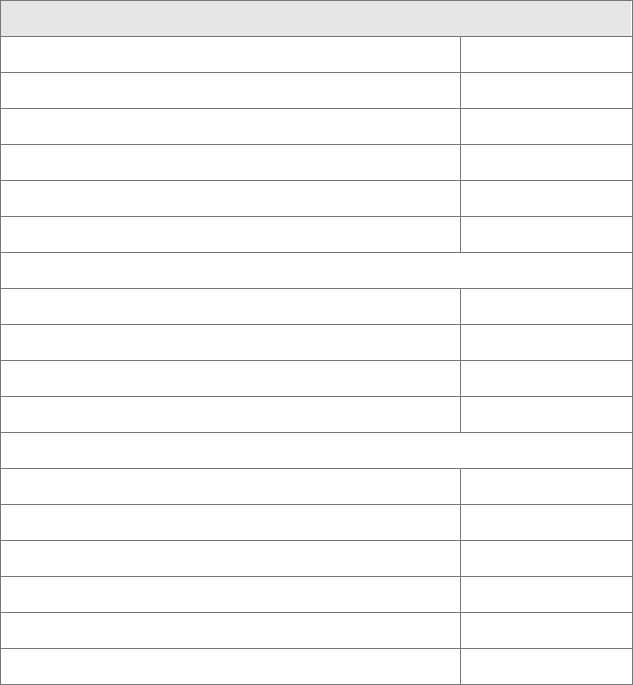
37
APPENDIX B
PRE-RENTAL CHECKLIST
Tenants can take this checklist with them when searching for
a rental. Before signing a lease agreement, tenants should ask
questions, explain their concerns, and inspect the rental.
Street Address: ___________________________________
Unit No. _________________________________________
Landlord’s Name: _________________________________
Landlord’s Telephone Number: ______________________
FINANCIAL ISSUES
How much is the rent per month?
$
Is the rent expected to change in the near future?
□ Yes □ No
Does the landlord accept personal checks?
□ Yes □ No
What is the fee for paying the rent late?
$
How much is the security deposit?
$
How much is the pet deposit?
$
How much does the landlord charge for extra services, such as:
Storage Space
$
Parking Space
$
Recreational Areas (pool, exercise equipment, etc.)
$
Other
$
What utilities does the landlord pay and what utilities do I pay?
Cable/Satellite TV
□ Landlord □ Tenant
Provider’s Name and Phone No.:
Electricity
□ Landlord □ Tenant
Provider’s Name and Phone No.:
Natural Gas
□ Landlord □ Tenant
Provider’s Name and Phone No.:
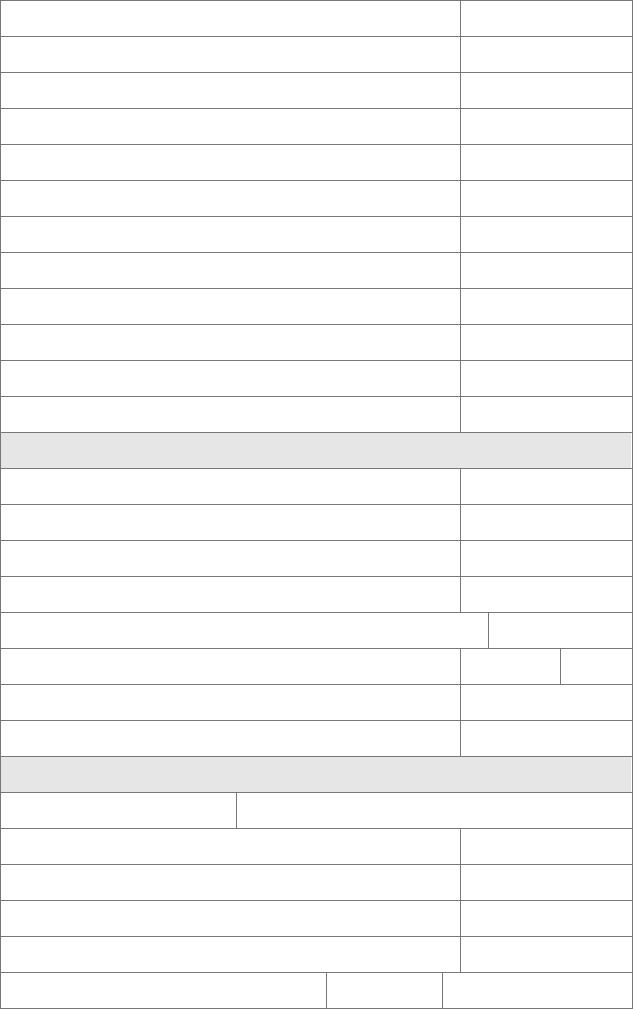
38
Internet Service
□ Landlord □ Tenant
Provider’s Name and Phone No.:
Lawn Maintenance
□ Landlord □ Tenant
Provider’s Name and Phone No.:
Security System
□ Landlord □ Tenant
Provider’s Name and Phone No.:
Telephone
□ Landlord □ Tenant
Provider’s Name and Phone No.:
Water, Sewer, Trash
□ Landlord □ Tenant
Provider’s Name and Phone No.:
Other:
□ Landlord □ Tenant
Provider’s Name and Phone No.:
MANAGEMENT ISSUES
Does the landlord live onsite?
□ Yes □ No
Does a property management company oversee the property?
□ Yes □ No
Who owns the property and is the owner in Idaho or out-of-state?
Are onsite maintenance personnel available for repairs?
□ Yes □ No
How are emergencies addressed? (leaky pipes; broken appliances, etc.)
What are the designated “quiet hours”?
AM:
PM:
What kinds of pets are allowed?
Is smoking allowed on the property?
□ Yes □ No
FACILITY/PROPERTY ISSUES
Where is the mailbox located?
Is the mailbox locked?
□ Yes □ No
Will the landlord accept/hold packages for tenants?
□ Yes □ No
Are garbage facilities easily accessible?
□ Yes □ No
Is there a laundry room on the property?
□ Yes □ No
How many washers and dryers are available?
Washers:
Dryers:
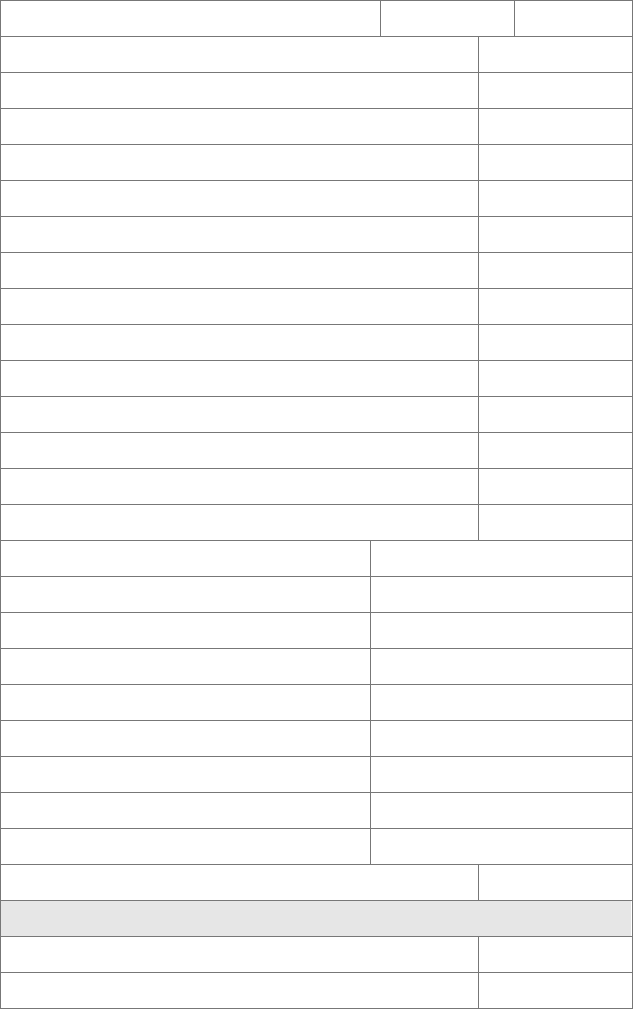
39
How much does it cost per load?
Wash: $
Dry: $
Is there an exercise room onsite?
□ Yes □ No
Is there a swimming pool onsite?
□ Yes □ No
Is there a clubhouse onsite?
□ Yes □ No
Is there an elevator between floors?
□ Yes □ No
Are the stairwells well-lighted and in safe condition?
□ Yes □ No
Is there sufficient parking?
□ Yes □ No
Is parking assigned and guaranteed?
□ Yes □ No
Is covered or secure parking available?
□ Yes □ No
Is the parking area well-lit and safe?
□ Yes □ No
How far away from the unit do I have to park?
□ Yes □ No
Is a fire alarm installed and is a fire extinguisher available?
□ Yes □ No
Is a security system installed and working?
□ Yes □ No
Are parents supervising their children?
□ Yes □ No
Are all necessary services relatively close by?
□ Yes □ No
Where is the closest grocery store?
Where is the closest gas station?
Where is the closest newspaper vendor?
Where is the closest gym?
Where is the closest park?
Where is the closest bus stop?
Where is the closest daycare?
Where is the closest hospital?
Where is the closest police station/fire department?
Are there registered sex offenders in the neighborhood/complex?
□ Yes □ No
RENTAL UNIT ISSUES
Is the rental clean and free of mold, rodents, and insects?
□ Yes □ No
Is the rental unit furnished?
□ Yes □ No

40
Is the unit air conditioned?
□ Yes □ No
Does the front door have a peephole, deadbolt, and chain?
□ Yes □ No
Is the carpet/tile clean and in good repair?
□ Yes □ No
Is the paint/wallpaper in good condition?
□ Yes □ No
Are there excessive nail holes or any damage to the walls?
□ Yes □ No
Can I hang things on the walls?
□ Yes □ No
Can I install shelves or make other improvements?
□ Yes □ No
Is the plumbing and electrical system in good repair?
□ Yes □ No
Where is the fuse/circuit box located?
Are sufficient power outlets available in each room?
□ Yes □ No
Are the bathrooms clean and in good repair?
□ Yes □ No
Is there any evidence of past leaks? (stains, mold, etc.)
□ Yes □ No
Is the kitchen clean and in good repair?
□ Yes □ No
Do all of the appliances work?
□ Yes □ No
Is there a dishwasher?
□ Yes □ No
Is there a microwave oven?
□ Yes □ No
Does the oven have an exhaust fan?
□ Yes □ No
Does the refrigerator have an icemaker?
□ Yes □ No
Is the refrigerator frost free?
□ Yes □ No
Is there sufficient storage/cupboard space?
□ Yes □ No
Is there sufficient counter space?
□ Yes □ No
Does the washing machine and dryer work (if available)?
□ Yes □ No
Are the washing machine and dryer of sufficient size?
□ Yes □ No
What type of heating system does the unit have? (gas, baseboards, etc.)
Do the ceiling fans work and are they clean?
□ Yes □ No
Do the windows have working locks?
□ Yes □ No
Where are the telephone jacks located?
Where are the cable/satellite hookups located?

41
What special equipment to access cable/satellite TV?
Are all of the rooms well-lighted?
□ Yes □ No
Are there any drafts around the doors or windows?
□ Yes □ No
Is the unit properly ventilated?
□ Yes □ No
Can you hear noise from other tenants? (footsteps, babies crying, etc.)
□ Yes □ No
LEASE ISSUES
What is the length of the lease? (month-to-month; six months, etc.)
How much notice do I have to give before I move out?
□ 1 Mo. □ 2 Wks. □ 30 Days
When is the move-in inspection scheduled?
Date:
Time:
How many days do I have to conduct a move-out inspection?
What cleaning company does the landlord prefer to use?
OTHER QUESTIONS/ISSUES/PROBLEMS
WHAT I LIKE ABOUT THE RENTAL:
WHAT I DISLIKE ABOUT THE RENTAL:
WHAT REPAIRS NEED TO BE MADE BEFORE I MOVE IN?

42
WHAT I NEED TO DO BEFORE I MOVE IN:
Task Description:
Deadline
Completed
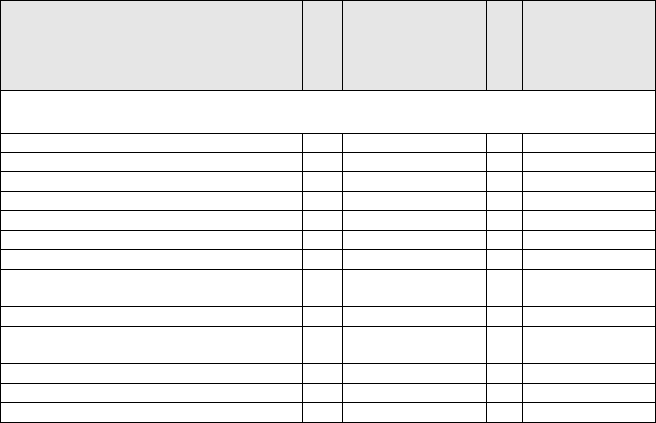
43
APPENDIX C
RENTAL MOVE-IN & MOVE-OUT CHECKLIST
The Attorney General recommends that tenants conduct a
move-in inspection with their landlord or property manager
present. This should be done before moving in or at the time
of move-in. The checklist below, or a similar form, will
provide a record of the inspection. Tenants are encouraged to
conduct a move-out inspection with the landlord or property
management representative present. Tenants also should ask
during the inspection what the landlord or manager requires to
receive a full refund of the tenant’s security deposit.
Ratings:
E = Excellent
G = Good
F = Fair
P = Poor
R/C = needs to be repaired or cleaned
N/A = Not Applicable
Room/Area
Rating
Move
-In
Remarks
Rating
Move
Out
Remarks
Kitchen
Refrigerator, Exterior
Refrigerator Interior incl. Shelves/Drawers
Refrigerator Temp. and light
Freezer Temp.
Ice Maker/Ice cube trays
Stove incl. hood/light/fan/filter
Stove incl. Burners, Burner Pans, Knobs
Oven incl. Interior/Broiler Pan,
Racks/Knobs/light
Garbage Disposal and Switch
Dishwasher incl. racks/baskets/soap
dispenser
Microwave, inserts/racks
Cabinets/Drawers/Handles/Shelves
Countertops

44
Room/Area
Rating
Move
-In
Remarks
Rating
Move
Out
Remarks
Sink /Faucet
Ceiling/Walls
Paint/Wallpaper
Doors/Doorstops
Door locks & Knobs
Flooring/Carpet
Baseboards
Light Fixtures/bulbs
Windows & Screens, latches/locks
Curtains/Rods/Blinds
Electrical Outlets & Switches
Smoke Detector/Battery
Fire Extinguisher
Other:
Living Room
Ceiling/Walls
Paint/Wallpaper
Doors/Doorstops
Door locks & Knobs
Flooring/Carpet
Baseboards
Light Fixtures/bulbs
Windows & Screens, latches/locks
Curtains/Rods/Blinds
Electrical Outlets & Switches
Other:
Dining Room
Ceiling/Walls
Paint/Wallpaper
Doors/Doorstops
Door locks & Knobs
Flooring/Carpet
Baseboards
Light Fixtures/bulbs
Electrical Outlets & Switches
Windows & Screens, latches/locks
Curtains/Rods/Blinds
Other:
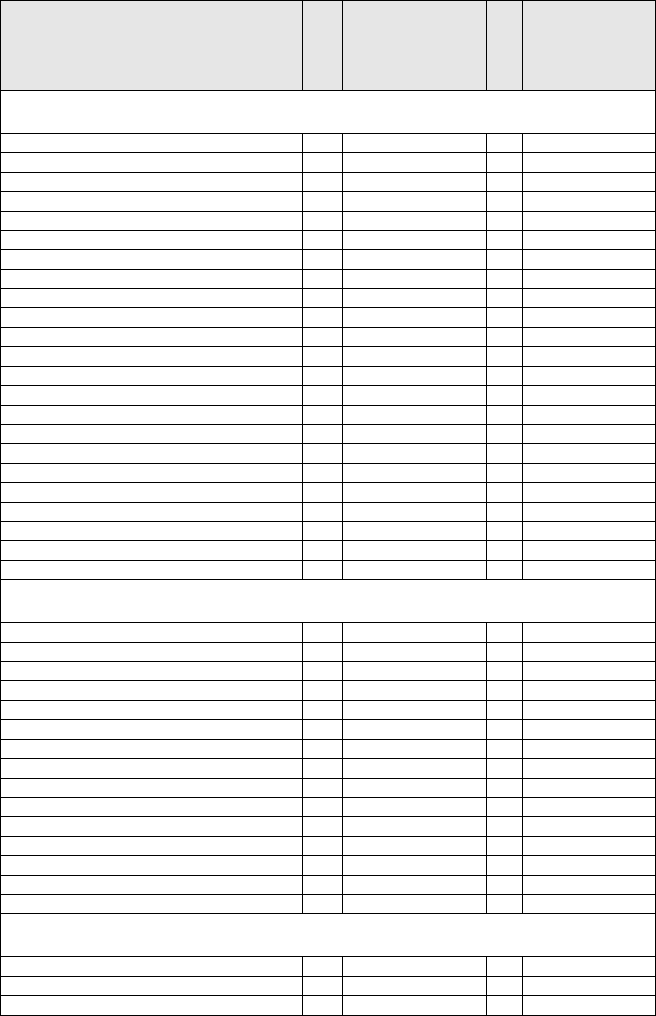
45
Room/Area
Rating
Move
-In
Remarks
Rating
Move
Out
Remarks
Bathroom(s)
Sink/Faucets
Toilet & lid
Tub/Shower Enclosure
Plumbing
Cabinets/Drawers/Handles/Shelves
Towel Racks
Toilet Paper Holder
Exhaust Fan/Heaters
Countertops
Mirror
Ceiling/Walls
Paint/Wallpaper
Doors/Doorstops
Door locks & Knobs
Flooring/Carpet
Baseboards
Light Fixtures/bulbs
Electrical Outlets & Switches
Windows & Screens, latches/locks
Curtains/Rods/Blinds
Other:
Bedroom(s)
Ceiling/Walls
Paint/Wallpaper
Doors/Doorstops
Door locks & Knobs
Flooring/Carpet
Baseboards
Light Fixtures/bulbs
Electrical Outlets & Switches
Windows & Screens, latches/locks
Curtains/Rods/Blinds
Closet/Shelves/Rod
Smoke Detector/Battery
Other:
Utility/Laundry Area
Ceiling/Walls
Paint/Wallpaper
Doors/Doorstops
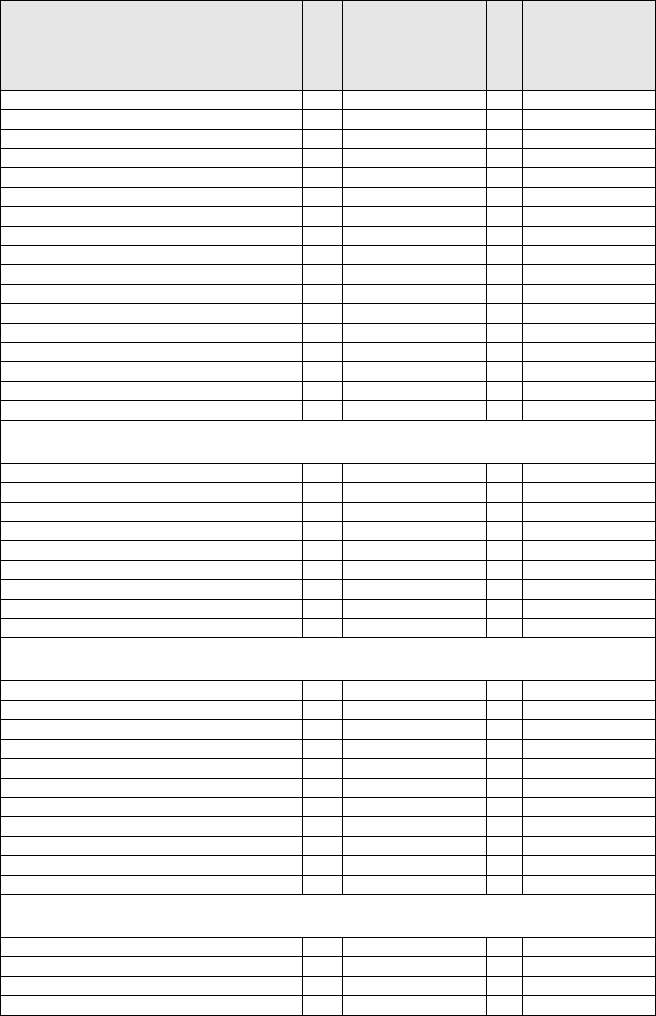
46
Room/Area
Rating
Move
-In
Remarks
Rating
Move
Out
Remarks
Door locks & Knobs
Flooring/Carpet
Baseboards
Light Fixtures/bulbs
Electrical Outlets & Switches
Windows & Screens, latches/locks
Curtains/Rods/Blinds
Closet/Shelves/Rod
Sinks/Faucets
Countertops
Cabinets/Drawers/Handles/Shelves
Washer
Dryer
W&D Connections
Other:
Other Interior Spaces
Entryway
Hallways
Stairs
Basement
Linen/Coat Closets/Cabinets
Storage Rooms
Other:
Garage
Ceiling/Walls
Paint
Doors/locks & Knobs
Floor
Light Fixtures/bulbs
Electrical Outlets & Switches
Windows & Screens, latches/locks
Auto Door Opener/safety reversal/remotes
Other:
Other
Thermostats
Furnace/Filter
Air Conditioner(s)
Water Heater

47
Room/Area
Rating
Move
-In
Remarks
Rating
Move
Out
Remarks
Water Softener
Security System
Smoke Detectors/Batteries
Doorbell
Entry Door Peephole
Weather stripping
Exterior
Mailbox
Fences/Gates
Lawn/Trees/Shrubs
Roof & Gutters
Flowerbeds/landscaping
Doors/Knobs/Locks
Lights/Bulbs
Other:
Move-in Remarks Approved:
________________________________________________
Tenant Signature Date
__________________________________________________________
Landlord Signature Date
Move-out Remarks Approved:
________________________________________________
Tenant Signature Date
__________________________________________________________
Landlord Signature Date

Rev. 07/23
Funds collected by the Attorney General’s Consumer Protection
Division as the result of enforcement actions paid for this pamphlet.
No tax monies were used.
Office of the Attorney General State of Idaho
Consumer Protection Division
P.O. Box 83720 Boise, ID 83720-0010
954 W. Jefferson St., 2
nd
Fl. Boise, ID 83702
(208) 334-2424 (local) (800) 432-3545 (in Idaho)
www.ag.idaho.gov
